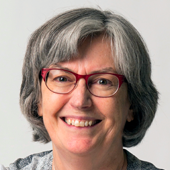Isabel Smith, a clinical-developmental psychologist, is the Joan & Jack Craig Chair in Autism Research at Dalhousie University and the IWK Health Centre in Halifax, Nova Scotia, Canada.

Isabel Smith
Professor
Dalhousie University
From this contributor
Detecting a signal amid noise in autism early-intervention research
Studies of behavioral treatments for autism are complex and can easily be misunderstood. Here we provide some guidance.

Detecting a signal amid noise in autism early-intervention research
Explore more from The Transmitter
What is the future of organoid and assembloid regulation?
Four experts weigh in on how to establish ethical guardrails for research on the 3D neuron clusters as these models become ever more complex.

What is the future of organoid and assembloid regulation?
Four experts weigh in on how to establish ethical guardrails for research on the 3D neuron clusters as these models become ever more complex.
Insights on suicidality and autism; and more
Here is a roundup of autism-related news and research spotted around the web for the week of 8 December.

Insights on suicidality and autism; and more
Here is a roundup of autism-related news and research spotted around the web for the week of 8 December.
Exclusive: Springer Nature retracts, removes nearly 40 publications that trained neural networks on ‘bonkers’ dataset
The dataset contains images of children’s faces downloaded from websites about autism, which sparked concerns at Springer Nature about consent and reliability.

Exclusive: Springer Nature retracts, removes nearly 40 publications that trained neural networks on ‘bonkers’ dataset
The dataset contains images of children’s faces downloaded from websites about autism, which sparked concerns at Springer Nature about consent and reliability.